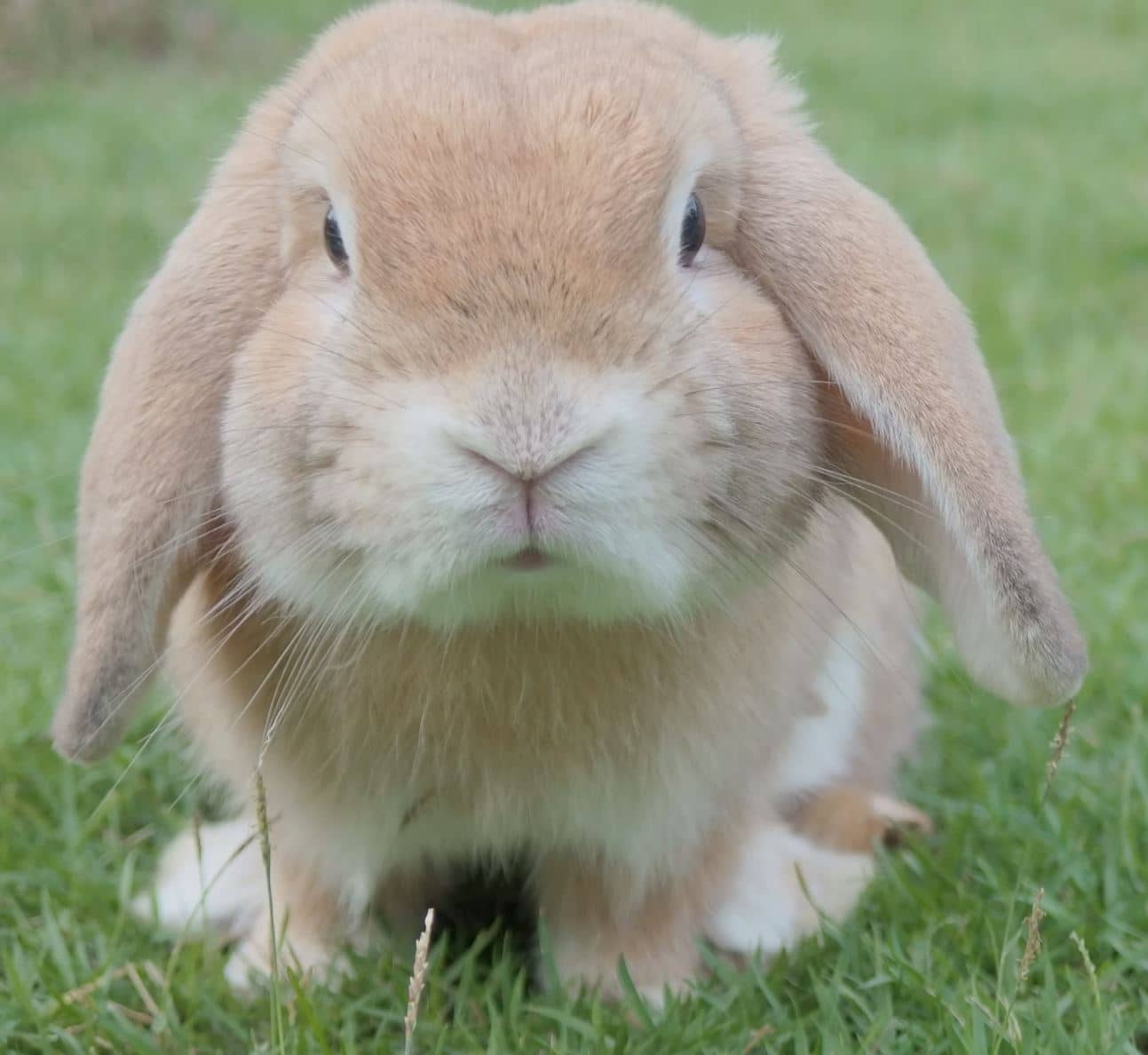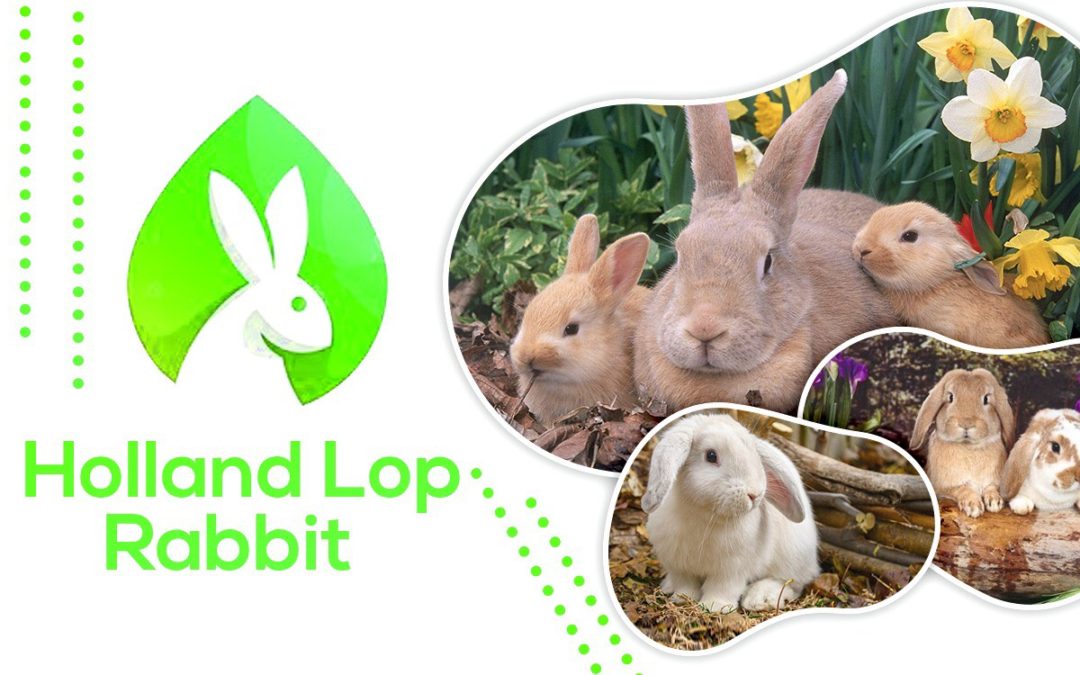The Holland Lop is a friendly, sweet-tempered breed of rabbit and is popular all over the United States and Europe. Although every rabbit is different, this breed tends to be on the gentle side. making it a good pet for children.
History of the Holland Lop
The Holland Lop was developed in the Netherlands by the Dutch breeder, Adrian de Cock. His vision was to produce a smaller version of the French Lop, which was a popular breed at the time. So, he took a French Lop buck and mated it to a Netherland Dwarf doe. His first try did not meet his expectations, the litter being abnormally large and dying at birth along with the doe. Disheartened, Adrian gave up.
Two years later, in 1951, Adrian decided to try again, this time using a French Lop doe and a Netherland Dwarf buck. He had thought of this before, but not being able to imagine how the male would be able to mate such a giant doe decided it was impossible.
Nobody knows how this mating was carried out. How a little buck could manage to mate such a big female was incredible! The mating was successful and the resulting litter all survived.
Adrian was disappointed though that the ears on the litter were all erect. He ended up mating one of the young does to an English Lop, who was smaller than the French Lop. It had much bigger ears that were definitely lopped.
This litter Adrian was very pleased with. When the litter was five months old, their ears were completely lopped.
After 8 years of breeding, Adrian got `the perfect Holland Lops.’ They were now 2-4 lb. and available in 30 different colors. What wonderful rabbits Adrian de Cock has left for us to enjoy!
The Appearance of the Holland Lop
The Holland Lop has a short, stumpy body; dense, glossy fur; and adorable, little lopped ears.
Their fur is in 30 colors. Some of the main ones are light orange (fawn), chocolate, squirrel, and lilac.
Holland Lop Size
Their lopped ears are their distinct feature. Holland Lops being small have short and stubby legs. Their eyes are usually black, but they can also be brown or other colors. They have small tails that are straight, sturdy, and fluffy. All Holland Lops have long hind feet and small front feet.
How to Care For a Holland Lop
Holland Lops are not difficult to care for. They only need basic care and grooming. Weekly brushings and monthly nail trimmings are a good idea. Keep in mind that a wire-bottomed cage will keep their fur clean, but will also make their feet sore if they don’t have an area to sit on that’s more smooth. Hay mats and wooden floors can help. As with all other rabbits, Holland Lops should never be bathed. If they are dirty, brushing them can help. Holland Lops should be kept in a cage that is a minimum of 18”x 24”, but remember, the bigger the better. Holland Lops should be fed hay, a bowlful of pellet feed, water, and a handful of greens every day. Keep chewing toys around as rabbit teeth grow rapidly and need to be filed by chewing down. Some wood or fruit tree twigs do the job. You can even take an empty toilet paper roll, stuff it with hay, and hand it to them.
Holland Lops cannot just be left in their cage with food and water. They thrive on exercise and companionship. Keeping a playpen for them to run around in is advisable. Just make sure to look out for predators. As for holding your rabbit, do it as often as you can. Most rabbits that aren’t held become shy, nippy, and don’t want to be held. People who hold their Holland Lops every day tend to get a loving, friendly, rabbit.
How long do Holland Lops live?
The better they are cared for the longer they will generally live. The maximum known age of a Holland Lop is 17 years. Rabbits from 1.5 to 5 lbs are considered dwarf rabbits. The Holland Lop is typically from 2 lbs to 4 lbs. Dwarf rabbits typically live 7-15 years.
Are Holland Lops Show Quality?
Scored on health, weight, size, and body type, the Holland Lop is considered to show quality. When posed correctly, they should be sitting uprightly with their rear end on the table, their front legs propping them up, and their hind feet tucked squarely underneath their body. The legs should be short, thick, and stumpy. The body should be short, wide, and well-balanced. The rabbit’s curving head should have a short, wide, muzzle. Thick, well-furred ears should hang evenly on both sides. Rub your hand over the spine, it should be well-covered with flesh. Make sure your rabbit’s coat is thick and glossy. Before you enter a rabbit show be sure your rabbit is healthy, well-kept, and active.
Holland Lop Chart:
- Head: Strongly curved
- Crown: Wide and thick
- Ears: Lopped and well-furred, falling 1 inch below the jawline
- Eyes: Bold and bright
- Body: Short, broad, muscular, and well-balanced
- Legs: Short, thick, and straight
- Bone: Short and heavy
- Weight: 2lb. to 4 lb. (3lb. Being the ideal Holland Lop size)
- Flesh: Muscular, firm, and well-toned
- Fur: Thick, smooth, glossy, and 1 inch long
Known Colors of Holland Lops are:

- Chestnut Agouti
- Chocolate Agouti
- Chinchilla
- Chocolate Chinchilla
- Lynx Opal
- Squirrel
- Black/Orange Tricolor
- Blue/Fawn Tri Color
- Chocolate/Orange Tricolor
- Lilac/Fawn Tricolor
- Black Pointed White
- Blue Pointed White
- Chocolate Pointed White
- Lilac Pointed White
- Black
- Blue
- Chocolate
- Lilac
- Blue Eyed White
- Ruby Eyed White
- Sable Point
- Siamese Sable
- Seal
- Smoke Pearl
- Black Tortoise
- Blue Tortoise
- Chocolate Tortoise
- Lilac Tortoise
- Black Otter
- Blue Otter
- Chocolate Otter
- Lilac Otter
- Gold Tipped Black Steel
- Gold Tipped Blue Steel
- Gold Tipped Chocolate Steel
- Gold Tipped Lilac Steel
- Silver Tipped Black Steel
- Silver Tipped Blue Steel
- Silver Tipped Chocolate Steel
- Silver Tipped Lilac Steel
- Cream
- Fawn
- Frosty
- Orange/Red
My favorite Holland Lop color is red/orange because that is the one I picked as a young child. His name was Bubba. He liked to parkour off the walls, furniture, and our dog.
Which is your favorite color for a Holland Lop and why?
I have always loved rabbits. A rabbit was my very first pet. Since owning my first rabbit I have gone on to own many more. I look forward to being able to get my kids their very own pet rabbits.


I have adopted 2 Holland Lops, a Buck and a Doe. They are my 1st rabbits ever and I am hoping that I do this right. Chloe and Bastian. Pedigree Rabbits!!!!